Well, its been one very long day! We only managed a trip to a sherry cellar in Jerez, as ended up spending the afternoon at the Police station!
To cut a long story short
... My car was broken into whilst we were taking a tour! We returned to find glass everywhere, a broken window and a bag missing, which of course instantly put a downer on the trip.
I can only be thankful that the car wasn't stolen as well, as typically this was the one time we had left everything in it!
We are both ok, just now have to deal with the frustration of sorting it all out :(. The good news (we are trying to be positive!) is that although I'm well behind in writing my Algarve blog entry I'm up to date on Spain so far...
Jerez
Jerez today is a mix of the high society associated with the production of sherry and the unfortunate contrast of significant levels of unemployment (the highest in the whole of Spain at last count it seems - 35%).
The people here are gitanó (Roma or gypsies) and apparently beautiful which is maybe part of the reason that this town is also well known for its flamenco
.
I had hoped to have visited the flamenco centre which is a combined library, museum and school, but due to unforeseen circumstances (!) we only made it to the sherry bodega at Sandemans.
So, here's little bit about that...
Sherry is exclusive to 3 varieties of white grapes: Palomino (95% of vineyards/sherry), Pedro Ximenez and Moscatel (the latter 2 are specifically used for sweet sherries). There seems to be an art to blending sherries as they age in order to produce a consistent quality as well as a number of different varieties.
Only a maximum of 70 litres per 100 kilos of grapes is extracted and the remainder, which has a higher alcohol content, is then used to fortify some of the sherries to increase their alcohol content.
After extraction the sherry is fermented for a period of at least 2 months before being classified by tasting manually (I want that job!)After that the ageing process begins, which involves drawing the wine from the lowest level of the barrel stack (bodega - typically consists of 4 layers of barrels) first, and just a third of each barrel at a time
. This process is repeated up to a maxinum of 3 times in a year and so that the younger wines (at the top) can age further.
The Sandeman brand consists of 2 companies, this one here in Jerez and the other in Porto, where I was last week tasting the Port (although ran out if time to get to Sandemans itself).
The Jerez company was set up by a Scotsman in 1790, and was the first to brave advertising of a brand during a time when this was disapproved of (casks were usually unmarked). If you haven't heard of Sandemans you may still have seen the famous `Don` which was created in 1928, who represents both sherry (Spanish) and port (Portugese) with the sombrero hat and student cape of those times.
We certainly enjoyed the tour which was informative and a great pre lunch apperitif. The tastings on offer ranged from the 3 - fine, medium and sweet standard sherries to the aged/vintage offerings as well as a tapas lunch.
If you're passing through the area, do take a tour, but don't leave your car on the street if you can avoid it!
Sherry bodega and hijo de puta!
Thursday, February 28, 2013
 Jerez De La Frontera, Andalusia, Spain and Canary Islands
Jerez De La Frontera, Andalusia, Spain and Canary Islands
Other Entries
-
124 shades of green (almost!)
Feb 1216 days prior Santander, Spain and Canary Islandsphoto_camera4videocam 0comment 0
Santander, Spain and Canary Islandsphoto_camera4videocam 0comment 0 -
2Beautiful cathedral and a cute border town
Feb 1216 days prior León, Spain and Canary Islandsphoto_camera12videocam 0comment 1
León, Spain and Canary Islandsphoto_camera12videocam 0comment 1 -
3Port crawl limitations
Feb 1414 days prior Porto, Portugalphoto_camera20videocam 0comment 2
Porto, Portugalphoto_camera20videocam 0comment 2 -
4Sweet treats from coast to castle
Feb 1612 days prior Nazare, Portugalphoto_camera13videocam 0comment 0
Nazare, Portugalphoto_camera13videocam 0comment 0 -
5Custard tarts
Feb 1711 days prior Belém, Portugalphoto_camera22videocam 0comment 0
Belém, Portugalphoto_camera22videocam 0comment 0 -
6Tram no 28... don't miss it!
Feb 1810 days prior Lisbon, Portugalphoto_camera7videocam 0comment 2
Lisbon, Portugalphoto_camera7videocam 0comment 2 -
7Bones await
Feb 199 days prior Évora, Portugalphoto_camera12videocam 0comment 0
Évora, Portugalphoto_camera12videocam 0comment 0 -
8Exploring the Portugese West Coast
Feb 226 days prior Porches, Portugalphoto_camera4videocam 0comment 0
Porches, Portugalphoto_camera4videocam 0comment 0 -
9Residence of Henry the Navigator
Feb 235 days prior Lagos, Portugalphoto_camera3videocam 0comment 0
Lagos, Portugalphoto_camera3videocam 0comment 0 -
10Bye bye Portugal :(
Feb 244 days prior Tavira, Portugalphoto_camera5videocam 0comment 0
Tavira, Portugalphoto_camera5videocam 0comment 0 -
11Star Wars was filmed here
Feb 253 days prior Seville, Spain and Canary Islandsphoto_camera25videocam 0comment 0
Seville, Spain and Canary Islandsphoto_camera25videocam 0comment 0 -
12Sherry bodega and hijo de puta!
Feb 28 Jerez De La Frontera, Spain and Canary Islandsphoto_camera9videocam 0comment 0
Jerez De La Frontera, Spain and Canary Islandsphoto_camera9videocam 0comment 0 -
13The oldest city in Europe
Mar 011 day later Cádiz, Spain and Canary Islandsphoto_camera6videocam 0comment 0
Cádiz, Spain and Canary Islandsphoto_camera6videocam 0comment 0 -
14Escape town and head for the upper rock/reserve
Mar 033 days later Gibraltar, United Kingdomphoto_camera17videocam 0comment 0
Gibraltar, United Kingdomphoto_camera17videocam 0comment 0 -
15Drinks in Monda
Mar 044 days later Marbella, Spain and Canary Islandsphoto_camera0videocam 0comment 0
Marbella, Spain and Canary Islandsphoto_camera0videocam 0comment 0 -
16Expensive parking!
Mar 066 days later Málaga, Spain and Canary Islandsphoto_camera8videocam 0comment 0
Málaga, Spain and Canary Islandsphoto_camera8videocam 0comment 0 -
17Beautiful despite the robbers/beggars
Mar 088 days later Granada, Spain and Canary Islandsphoto_camera17videocam 0comment 0
Granada, Spain and Canary Islandsphoto_camera17videocam 0comment 0 -
18Childhood memories
Mar 1010 days later Javea, Spain and Canary Islandsphoto_camera12videocam 0comment 0
Javea, Spain and Canary Islandsphoto_camera12videocam 0comment 0 -
19Just 468 km2
Mar 1111 days later Andorra la Vella, Andorraphoto_camera3videocam 0comment 0
Andorra la Vella, Andorraphoto_camera3videocam 0comment 0 -
20Into France
Mar 1212 days later Molieres, Francephoto_camera2videocam 0comment 0
Molieres, Francephoto_camera2videocam 0comment 0 -
21Only one thing worth doing here
Mar 1414 days later Épernay, Francephoto_camera11videocam 0comment 0
Épernay, Francephoto_camera11videocam 0comment 0 -
22Not as small as I thought
Mar 1515 days later Luxembourg City, Luxembourgphoto_camera6videocam 0comment 1
Luxembourg City, Luxembourgphoto_camera6videocam 0comment 1 -
23Chocolates and charm
Mar 1616 days later Brugge, Belgiumphoto_camera24videocam 0comment 0
Brugge, Belgiumphoto_camera24videocam 0comment 0 -
24Electric storm and fake shopping, Petaling Street
Apr 2354 days later Kuala Lumpur, Malaysiaphoto_camera6videocam 0comment 0
Kuala Lumpur, Malaysiaphoto_camera6videocam 0comment 0 -
25Just info but bag arrived :)
Apr 2556 days later Hanoi, Vietnamphoto_camera4videocam 0comment 0
Hanoi, Vietnamphoto_camera4videocam 0comment 0 -
26Vietnam/Laos border crossing
Apr 2657 days later Vinh, Vietnamphoto_camera2videocam 0comment 0
Vinh, Vietnamphoto_camera2videocam 0comment 0 -
27It's nicer over the border
Apr 2758 days later Nam Phao, Laosphoto_camera6videocam 0comment 0
Nam Phao, Laosphoto_camera6videocam 0comment 0 -
28Getting charitable and key sights
Apr 2859 days later Vientiane, Laosphoto_camera23videocam 0comment 0
Vientiane, Laosphoto_camera23videocam 0comment 0 -
29Get a buggy and tubing if you want
Apr 2960 days later Vang Vieng, Laosphoto_camera11videocam 0comment 0
Vang Vieng, Laosphoto_camera11videocam 0comment 0 -
30Alms giving, waterfalls and a prostitute!
May 0263 days later Luang Prabang, Laosphoto_camera18videocam 0comment 0
Luang Prabang, Laosphoto_camera18videocam 0comment 0

 Jerez De La Frontera, Andalusia, Spain and Canary Islands
Jerez De La Frontera, Andalusia, Spain and Canary Islands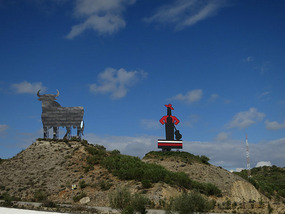
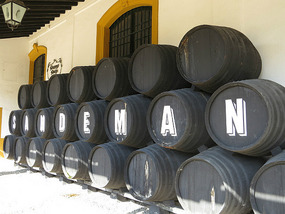
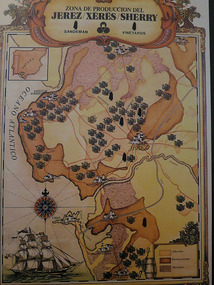











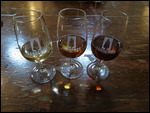


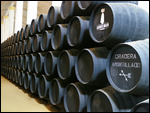

2025-05-22